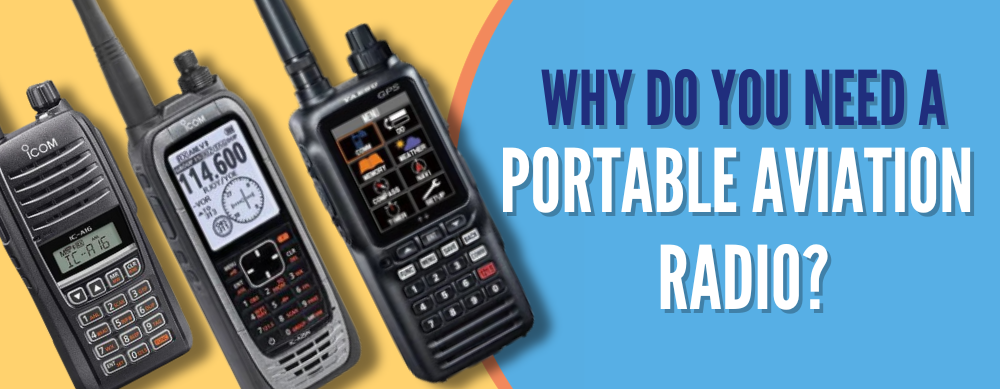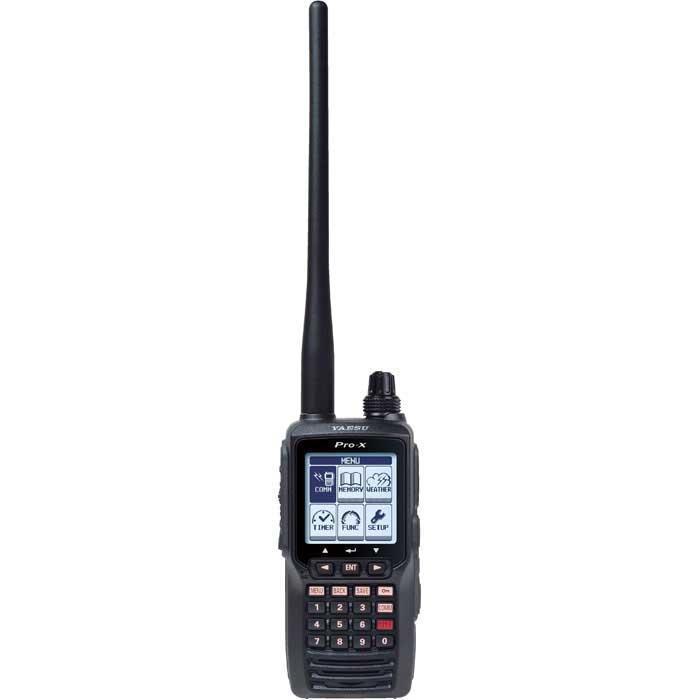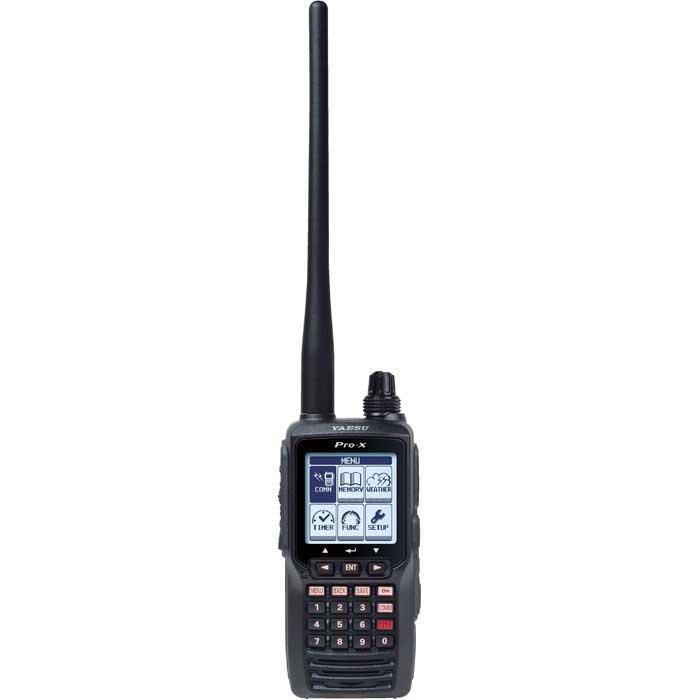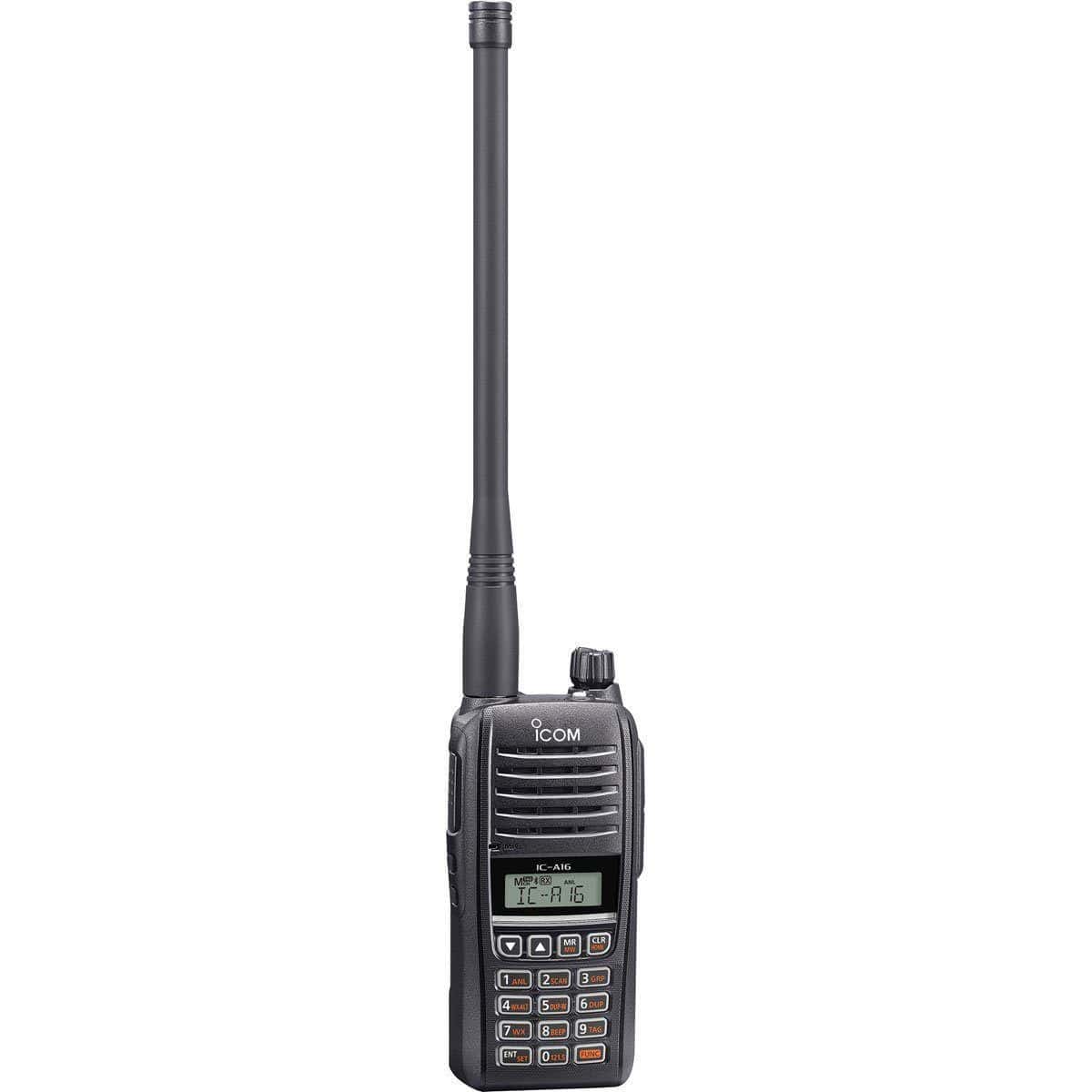
Why do I Need an Aviation Handheld Radio?
Imagine the perfect IFR flight plan. The ceiling is overcast at nine hundred feet and the winds are calm. The visibility is two miles, and these are the prevailing conditions for the entire day at your home field and destination.
The opportunity for a single-pilot instrument flight couldn’t be better. It’s time to go out and add some actual weather experience to that instrument rating you worked so hard to earn.
Ever the diligent aviator, you planned thoroughly for this IFR operation. You depart the home field, start a climb, and punch into the clouds. It’s a little bumpy, but you are confident and prepared.
While executing the Obstacle Departure Procedure it feels like the airplane is in a bank, but you trust your instruments, maintain your heading, and continue your climb. Your instrument scan is sharp and fast. Everything is going exactly as planned. The radios, however, have been strangely quiet.
You attempt to call departure control with no success, then switch back to the tower frequency and try to make contact; nothing.
What about radio number two? You change the radio frequency over hoping to hear the familiar audio recording of your home field ATIS, but there is only silence. It is now apparent that you are in a lost communications environment. Regardless of experience level, it’s a lonely feeling. You are in the clouds all alone, an hour or more (maybe far more) from your destination.
Wouldn’t it be nice to have one more chance to hear the reassuring sound of a controller clearing you through to your destination, or better yet, vectoring you back for a landing at your home base? Of course, it would.
So, why haven’t you invested in a handheld radio? The peace of mind in knowing you have one more option for ATC communications could pay priceless dividends.

Popular Brands of Handheld Radios
Pilot Mall currently offers several handheld aviation radios such as the Icom Airband Radios and Yaesu FTA 250L Airband Radios. These handy devices will provide a layer of safety and assurance that many pilots are happy to have on their flights. Prices for a handheld aviation radio start at under $200.
Compare that price to what you would be willing to pay for not being alone… in the clouds… with no one to talk to... Just initiating this topic compels me to go check the batteries in my own airband.
 |
Yaesu FTA-250L (COMM ONLY) Li-Ion Handheld VHF TransceiverThe Yaesu FTA-250L is an extremely affordable, compact (COMM ONLY) Airband transceiver. Value packaged with a High Capacity (1950mAh) Lithium Ion Battery, Headset adapter, belt clip, 100-240VAC charger, 12VDC charger/power cable, with a drop-in charging cradle and other features. The Yaesu FTA handheld radio has incredible transmitting power. |
As pilots, we cherish safety, backup plans, and redundant systems. We all realize that creating options allows us to make better, safer decisions. The functionality, range, and expected battery life of the Icom Airband Radios and Yaesu FTA 250L Airband Radios are invaluable.
My own decision to purchase an air band radio didn’t happen on a lonely IFR flight. It happened while pre-flighting a Duchess on a gusty Saturday afternoon at a busy uncontrolled airport in California.
I distinctly remember hearing the dull thud of what I thought was a blown tire. I turned around to see an Archer, which had veered off the edge of the runway, the result of an attempted crosswind landing gone wrong.
Several people ran to the airplane to assist the occupants. While making my way to the scene, I noticed a friend of mine had the presence of mind to grab his Icom. Jon’s preparedness and quick thinking quickly averted another potential disaster that day.
We arrived at the disabled Archer, which was sunk in the mud with one wing resting on the runway near midfield. Seconds later, a Citation X announced that it was on short final for what was now clearly an inactive runway. Jon contacted the jet and diverted it from the field just prior to landing, but he didn’t stop there.
He proceeded to tune approach control and asked them to divert any additional arrivals until we could get someone to clear the runway. As an added benefit, the controller contacted the fire department for us. Jon, with the assistance of his handy, reliable Icom truly saved the day.
When my friend purchased this versatile tool (with 8.33 kHz/25 kHz channel spacing, good in the U.S. and EU), he wasn’t considering this scenario and the unexpected benefits his preparedness had reaped.
My friend’s swift action and ability to prevent a bad situation from getting worse that day won my respect and prompted my own research into airband radios.
After several passionate conversations with Jon and some other FBO friends, I decided to purchase the Icom IC-A25N, which also provides VOR and GPS navigation. I chose this model because, if you do lose communications, chances are pretty good that you may lose your navigation radios too.
It wasn’t long before I realized the true unexpected value of the handheld radio I had chosen primarily for emergency purposes. This useful radio soon became my primary means of picking up IFR clearances and communicating with my solo students.
Perfect for IFR Flight
It isn’t uncommon to wait extensive periods of time to pick up an IFR release at airports like KCCB in Upland, CA. Controllers are inundated with the freight push going into Ontario. We’ve all been there, general aviators like us are put on the bottom of the list, waiting on the big iron.
The ability to just shut down and wait it out is a relief, particularly if you are an instructor. There is nothing worse than a frustrated, Hobbs-fixated student in my opinion. The long battery life of air band radios can put you on the winning side of these long delays.
So, what are you waiting for? Before you seize that perfect IFR day, I encourage you to fully consider the purchase of an Icom or Yaesu FTA 250L Radio here at Pilot Mall.
The sigh of relief you will breathe when you reach into your flight bag and pull out another chance to transmit and receive (or navigate) on a lonely and quiet IFR flight makes the purchase of an Icom Airband Radio or Yaesu FTA 250L Radio well worth the purchase.
-
What radios are used in aviation?
When it comes to the world of aviation, a VHF radio called an Airband (or Aircraft Band) is used. Most aircraft have two radios on board with a panel mount.
-
Is aviation radio AM or FM?
The radio onboard your aircraft transmits using Amplitude Modulation (AM).
-
What is the best backup radio for pilots?
Handheld aviation radios with storage space for regularly used frequencies can make a great backup to have onboard. They need loud audio that can be heard on airport ramps or in aircraft cabins. It makes sense to keep a backup for any emergencies those could arise.
-
Do pilots use VHF or UHF?
In aviation, Very High Frequency (VHF) radios are used. VHF frequencies offer plenty of channels for aviation communication, including ATC, pilot-to-pilot talk, and other ops. This helps manage air traffic neatly and efficiently.

|
Icom IC-A16B (COM) Handheld VHF Transceiver with BluetoothWeighing just 9.1 ounces, the Icom IC-A16B (COM) Handheld VHF Transceiver with weather channel presets and Bluetooth capability offers simple, hands-free operations for students and other pilots alike. Add this handheld radio with great transmitting power to your flight bag. |
Takeaway
Handheld radios can be an important and potentially life saving addition to hand available inside your flight bag if you ever experience an electrical failure that impacts your coms. Look for a handheld aviation radio with a good battery life to have onboard your aircraft.
Fly safe!
Want to learn more about communications and equipment?
Our guides are designed to help student pilots become professional pilots and for private pilots to brush up on their knowledge and skills.
Did you find this article helpful?
Do you think we missed anything important? Let us know in the comments below!









